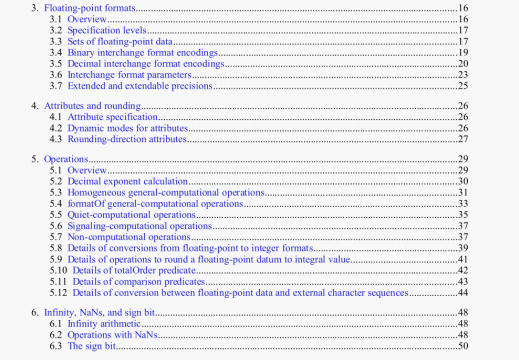IEEE Std 1277-2000 pdf download
IEEE Std 1277-2000 pdf download.IEEE Standard General Requirements and Test Code for Dry-Type and Oil-Immersed Smoothing Reactors for DC Power Transmission.
c) When the specific temperature-rise limits of the smoothing reactor have been reduced, either because of high cooling media temperature or because of high-altitude installation, this shall he indicated on the rating plate.
5.2.3 Loading at other than rated conditions
Loading of a smoothing reactor at other than rated current is a normal part of smoothing reactor operating practice for most HVDC projects. Smoothing reactors are normally designed for a specific converter station and are coordinated with the design of the valves, converter transformers, and other dc components. Examples of typical overloads include: low ambient temperature overload, emergency overload. monopolar operation following the loss of one pole, continuous overload with redundant coolers available (oilimmersed smoothing reactors only), 1 or 2 h overload, temporary overload for a duration of minutes or seconds, etc.
If the smoothing reactor is to he operated at various loading conditions (dc plus harmonics), these conditions and the respective allowable temperature rises must be included in the specification for the smoothing reactor.
5.2.4 Seismic condition
HVDC converter stations may be located in areas at significant risk of being affected by seismic activity. Therefore, the appropriate seismic zone/category from IEEE Std 693-1997 and NEHRP-1997 or other equivalent international seismic standard must be indicated in the smoothing reactor specification.
5.2.5 Other unusual service conditions
In addition to the usual service conditions described above, the following may also constitute unusual service conditions for smoothing reactors in HVDC applications.
a) Damaging fumes or vapors, excessive or abrasive dust, explosive mixtures of dust or gases, steam, salt spray, excessive moisture, etc. constitute unusual service conditions. For smoothing reactors, pollution aspects are important and must be accurately defined so that proper external insulation (particularly bushings and support insulators) may be provided. Pollution includes automotive, acid rain, (conductivities on the order of 1000—3000 p.S/cm vs. less than 100 p.S/cm for normal rain) fertilizers, road salt, oceanic salt, etc. Annex A and Annex B contain additional information on pollution.
b) Equivalent salt deposition density (ESDD) rates and creepage requirements should always be specified for bushings and other external insulation.
c) Installation conditions that may affect the operating temperature of the smoothing reactor include station layout (clearances), lack of air movement, solar radiation based heating of ground cover, etc.
d) Indoor installation in a high ambient temperature that may be continuously high.
e) Unusual limitations for transportation should always be specified; especially since smoothing reactors are large, heavy pieces of equipment. Unusual storage conditions (heavy moisture exposure) or duration of storage prior to installation (greater than 1 y) should be specified.
1) Maintenance restrictions should be specified; especially if time between maintenance is longer than I y or if it is not possible to perform periodic inspections.
g) Other unusual voltage conditions, including transient overvoltages, resonance, switching surge, etc., which may require special consideration in insulation design. For instance, if smoothing reactors are connected to SF insulated equipment, there may he risks of exposure to very fast voltage transients.
6.1 Basis for rating
The rating of a smoothing reactor shall he expressed in the following terms:
a) Rated dc voltage
h) Rated dc current
c) Harmonic current spectrum
d) Rated incremental inductance
e) Basic lightning—impulse insulation levels (across terminals and to ground)
1’) Oil and/or winding temperature rise
g) Method of cooling
h) Switching impulse level(s) (across the terminals and to ground)
I) Short-circuit current or surge current
6.2 Rated dc voltage
The rated dc voltage of a smoothing reactor is the maximum continuous dc voltage, pole-to-ground, that will he experienced by the smoothing reactor.
6.3 Rated currents
6.3.1 Rated dc current
The rated dc current of a smoothing reactor is the maximum continuous dc current at rated conditions.
6.3.2 Rated dc overload current
Several values may he specified, including I h maximum in a 24 h period, dc peak surge, low ambient overload, and redundant cooling (oil smoothing reactors only) overload. A time limit, usually in milliseconds. should he provided with the dc peak surge current. If not specified, this time limit should he considered to he I s. Allowable temperature rises and conditions should also he specified.




